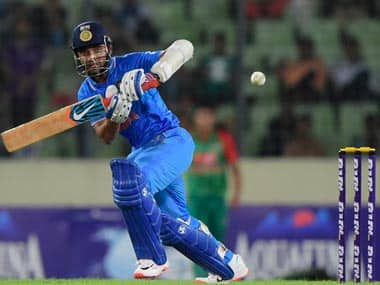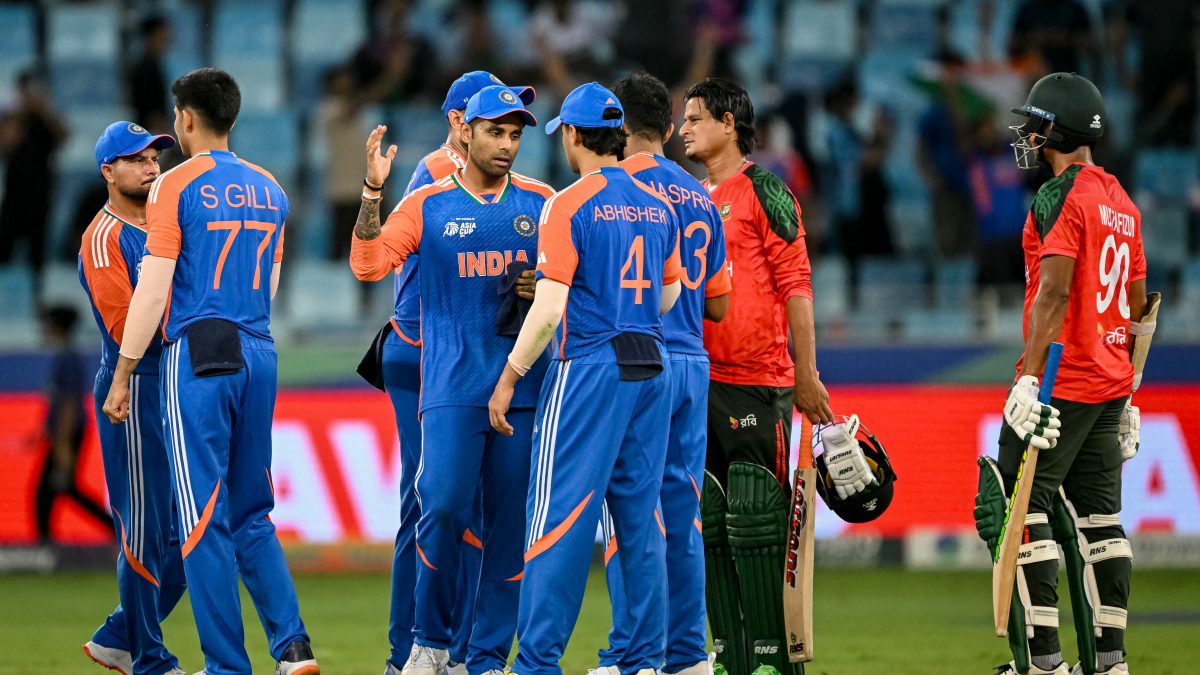After winning the toss against Bangladesh in the second ODI in Dhaka, MS Dhoni announced that he had made three changes to his side after the hammering a few days earlier at the same venue. One of them was to drop stylish shot-maker and all-round nice guy, Ajinkya Rahane for Ambati Rayudu.
Sure, Rahane had a poor outing in the first match – labouring for 9 runs from 25 balls in a chase of 300-plus – but so did most Indian batsmen. Except Rohit Sharma, no one emerged from that game with any kind of credit. So when Dhoni made his decision known, eyebrows were raised.
Rayudu then went on to get out for a duck in the match. Dhoni who promoted himself to Rahane’s position at No. 4, fought valiantly – euphemism for struggled badly – to make 47 from 75 balls (strike rate of 62.66) as India went on lose the game and the series to their next door neighbours.
Naturally, in his press conference after the match that has since been filling column inches and air-waves, Dhoni was asked about the decision.
“We all felt that Ajinkya would do really well as a third opener,” said Dhoni. “But we have had to move him up and down to the order. Thing is, Rahane needs pace. We have seen that he plays a lot better when there is pace on a wicket. Whenever he has played at No. 4 or No. 5, if the wicket is slow, then he struggles to rotate the strike freely. Especially when he is just starting his innings, he has a bit of trouble."
Cue more raised eyebrows. It seemed like a very harsh call to drop Rahane for something that the entire Indian batting order was culpable. After all, Rahane came into this series on the back of a majestic 103-ball 98 in the rain-hit test match in Fatullah. On a typical slow-ish subcontinent pitch, against a Bangladeshi attack that had just one genuine fast bowler, Rahane sparkled to play a selfless innings.
Impact Shorts
More ShortsAdd to that, the recently-concluded IPL season where Rahane was on top form throughout, making 540 runs at a terrific strike rate of 130.75. The IPL, most definitely, was not played on fast, bouncy, seaming tracks.
Stepping back a bit further, to Melbourne during the World Cup match against South Africa, Rahane came in at No. 4 to play a memorable 79 off 60, the strike-rate of 131.66 his highest in ODIs till date.
Add to the mix the fact Bangladesh was playing four genuine quick bowlers in this ODI series, dropping Rahane because he cannot play when there is no pace on offer, is definitely harsh. No two ways about that.
Harsh, yes. But was Dhoni making up reasons out of thin air? That may not be the case.
It is to be expected that in the star-studded Indian top order, Rahane will have the lowest strike rate, which currently reads a decent, if not spectacular, 76.8 in his 54 innings so far. But that number falls quite a bit when you consider the innings where he has not opened.
In 20 innings where he has batted at 3 and below, his strike rate is down to 68.64, despite the afore-mentioned blitzkrieg against South Africa in Melbourne.
The first ODI in Bangladesh is not an one-off either, as Rahane’s ODI form in 2015 has been a bit patchy. His 12 innings so far in 2015, his strike rate is 74 but these include the games against Bangladesh and Australia in the World Cup where he scored 19 (36 balls) and 44 (68 balls). In the semi-finals at MCG, which is to be noted as a pitch on the slower side, he was criticised again for holding up one end and struggling to rotate.
One of his best innings in ODI so far came against Sri Lanka in Cuttack in November last year, when he scored 111 from 108 balls. But that again was at the top of the order, and more interestingly, on a pitch that offered movement and bit of bounce for the faster bowlers.
His excellent IPL record is also when he opens the innings for Rajasthan Royals, where he gets to feed off the pace of new-ball bowlers.
It’s very evident that Rahane’s strength, in the limited overs, is at the top of the order and at No. 4 he is struggling to hold his place down. So is the solution as simple as letting him open? Not so, according to Dhoni.
“When we needed an opener, Rohit put his hand up, he took that opportunity, unless he wants to go down you don’t want to do that. It is his position and he has earned it,” was Dhoni’s rebuttal to that.
Contrast that to what Dhoni said about Rahane earlier this year after his knock in the World Cup against the Proteas.
“He’s definitely one of the individuals who is not really rigid. He’s quite open to ideas. If you normally ask him to do something, he would simply nod and say yes.”
A team-man beyond reproach, but this flexibility that Dhoni spoke highly of, has come back to hurt Rahane. The flexibility that pushed him to the middle-order, is now threatening to keep him away from the team, unless Dhoni suddenly changes his mind on Rohit or plans to play an extra batsman.
It is not ideal that Dhoni has to decide between playing Rahane at the top or not play him at all. It is not ideal that it comes down to a choice of Rohit Sharma over Ajinkya Rahane – two supremely talented shot-makers. It is not ideal that ‘Jinks’ is having a tough time cementing his place in the middle-order, often caught between rebuilding an innings and powering the team to a blockbuster finish.
But sometimes… that’s the way the cookie crumbles.


)

)
)
)
)
)
)
)
)



